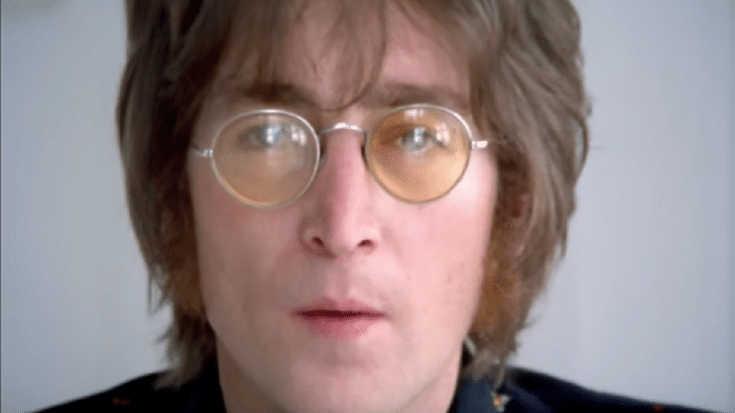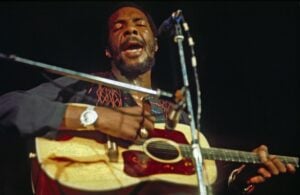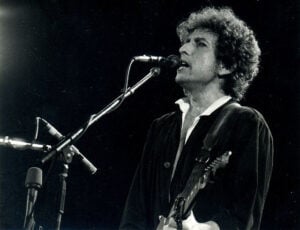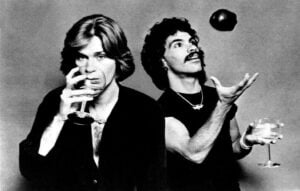5 Fascinating Facts You Probably Didn’t Know About John Lennon’s ‘Imagine’

via johnlennon/YouTube
John Lennon’s 1971 album Imagine remains one of the most well-known rock albums ever. Imagine preserved the raw emotional honesty of his first solo album, Plastic Ono Band, but it was also designed to be accessible for everyone to hear. It combined Lennon’s deeply intimate feelings with catchy songs that people couldn’t stop singing. What happened? A record that still matters today.
However, there are some lesser-known stories behind the famous tunes. These five facts about Imagine offer a new perspective on the album—not just the music itself.
Yoko’s Uncredited Influence
The title track, “Imagine,” quickly became a classic anthem for peace and unity. But many people don’t realize that Lennon didn’t write the lyrics entirely by himself.
John later revealed that the song’s premise was inspired by Yoko Ono’s conceptual art and poetry, which encouraged people to imagine how to make the world a better place. At first, Lennon didn’t give her credit, but later admitted that Yoko should have been credited as a co-writer. It took decades for her to receive official recognition. While fans may have had mixed feelings about their artistic partnership, Imagine wouldn’t be the same without her idea at its core.
A Beatles Song Revived
Lennon was eager to move on from his time with the Beatles. In fact, he once declared, “I don’t believe in the Beatles” in an earlier solo song. Yet he still revisited some material from that era.
“Jealous Guy,” one of the standout tracks on Imagine, was originally composed in 1968. During the Beatles’ meditation retreat in India, Lennon wrote a song called “Child of Nature,” inspired by advice from Maharishi Mahesh Yogi. The Beatles never recorded it for an album, but Lennon later rewrote the lyrics, gave the song a more vulnerable tone, and transformed it into the raw “Jealous Guy” fans know today.
The Final Session of a Soul Legend
Lennon didn’t just pick anyone for the saxophone solo on the slow, bluesy “It’s So Hard.” He invited King Curtis, one of the most celebrated soul and R&B saxophonists of all time, known for his work on tracks like “Yakety Yak.” Curtis’s playing was both powerful and graceful.
Curtis brought that same passion to the Imagine sessions. Tragically, this would be one of his last studio recordings—he was murdered just months later in a senseless act of violence. His performance on Imagine stands as a powerful farewell to an outstanding career.
Two Beatles on One Track
“How Do You Sleep?” wasn’t just another song; it was Lennon’s famous jab at Paul McCartney. The lyrics were scathing, making clear the tension between former bandmates. But what made the song even more striking was that George Harrison played slide guitar on the track.
Having another Beatle contribute felt like adding insult to injury, but Harrison’s playing made the song stand out musically. Interestingly, Ringo Starr was also expected to be part of the session but didn’t join. He reportedly didn’t like how harsh the song was and warned John that he was going too far. Alan White ended up playing drums instead. It’s fascinating to imagine how different the sound might have been if three Beatles had been on the same track.
A Missed Hit
“Yoko!” is one of the most upbeat tracks on Imagine—a bright, loving ode to Yoko Ono, with a catchy melody, vibrant piano by Nicky Hopkins, and an infectious chorus that invites sing-alongs. It seemed like a perfect candidate for a hit single.
The record label agreed and wanted to release it. But Lennon was unsure. He thought the song was too personal, maybe even a bit embarrassing due to its raw passion. In the end, he decided not to release it as a single. It never topped the charts, but fans embraced it. It remains a beautiful reminder that simple love songs can leave a lasting impact.
More Than Just a Note
Imagine wasn’t only about beautiful songs or perfect lyrics; it was about striving to make the world better. The album marked Lennon’s emergence from the Beatles’ shadow, showcasing his voice as a solo artist—both sensitive and accessible.
Behind every song lies a story of love, struggle, memory, or unity. And while Imagine feels timeless, these behind-the-scenes facts reveal that even the most iconic albums are rooted in real events and genuine emotion.












